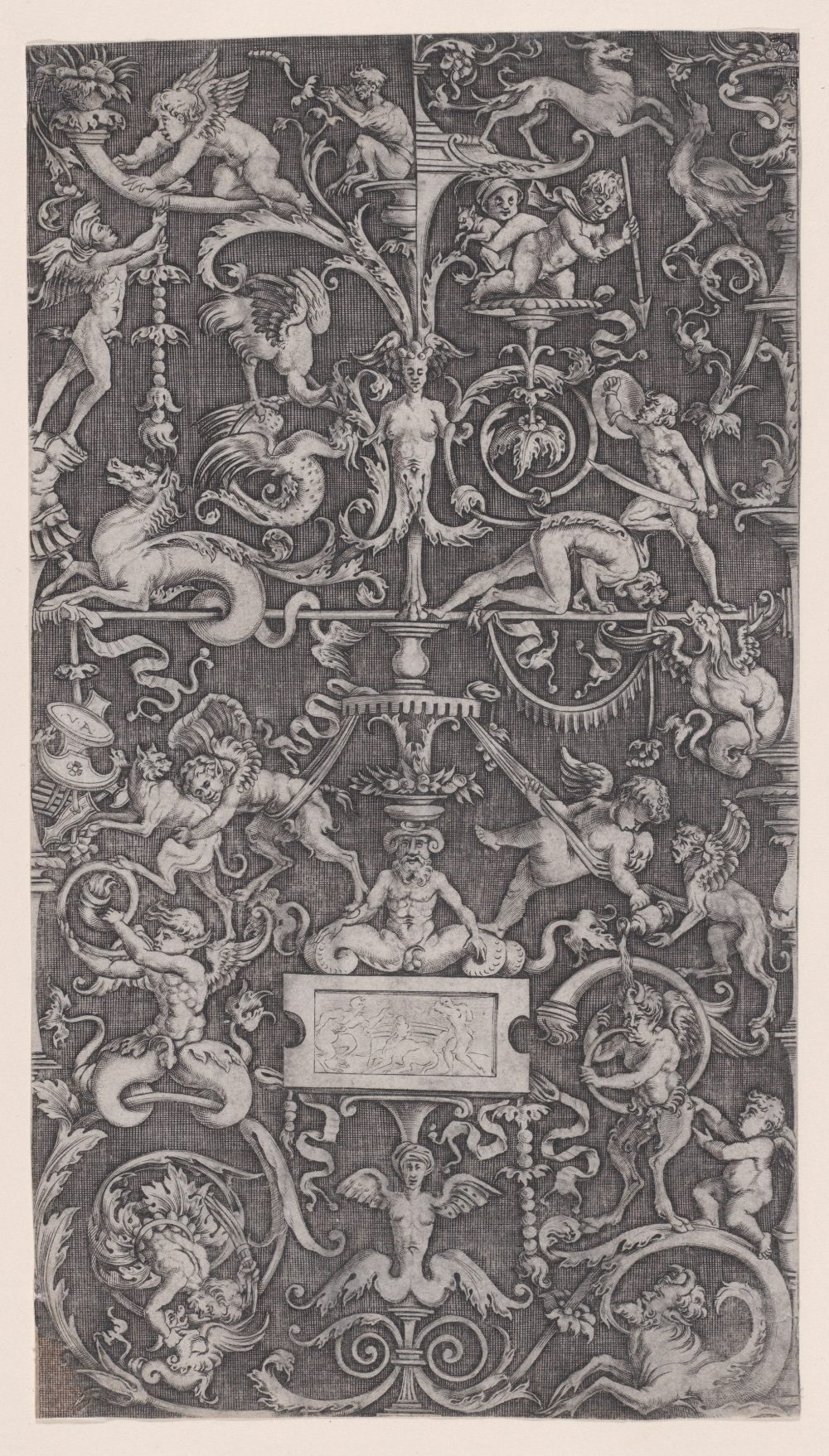
Metropolitan Museum of Art, New York, www.metmuseum.org
After the participants have divided painting into the three categories, they devote themselves to the freedom of the poetic painting. There are no boundaries to poetic painting, they say, as long as it adheres to the beauty and decorum of painting and the laws of nature. Ancient poetry is again mentioned as a reference.
“M. Francesco said: ‘If this were not the case, where would the freedom of the brush lie and where the glory and decorum [decoro] of poetry?’ […]
M. Silvio said: ‘Truly poetic liberty is extensive, when one considers that the poets have not only changed people into animals and animals into people but, as M. Francesco has said, inanimate things into animate beings, as Virgil did with the ships of Aeneas and Ovid with the ants turned into men’.
M. Troilo said: ‘So do we not see things outside the natural order included under poetic license?’
‘What things?’ asked M. Vinceso.
M. Troilo added: ‘Painters have invented monsters that could not exist in nature in order to hold up columns and vaults. In place of columns we see in that city (since we have begun by giving roman examples) sometimes the terms that you spoke of, sometimes half men and half-snake, sometimes simulated animals, sometimes dolphins, sometimes snakes, sometimes vines laden with grapes and leaves, sometimes ancient trophies, and other flights of imagination [capricci] done without observing rules or any law whatsoever; and all these are the ornament of painting.’
M. Vincenzo replied: ‘To everything you have said there is an easy reply. If we are discussing those fables that the ancients intended as fables, I admit that is permissible to represent them while respecting both the beauty [vaghezza] and decorum [decoro] of the art. Because just as it was permissible for the poets to make them up and write about them, so also it will be permissible for painters to paint them, following the path of the ancients who set the rules on these matters […]’.”
“Disse M. Francesco: ‘Se questo non fusse, in h’arebbe la libertà il pennello, e la poesia la gloria e ‘l decoro?’. […]
Disse M. Silvio: ‘Veramente la poetica libertà è grande, a considerare che i poeti non solo hanno gli uomini e gli animali convertiti in animali et in uomini, ma, come M. Francesco ha detto, le cose insensate fattoli pigliar forma sensitiva, come fece Virgilio de le navi d’Enea et Ovidio de le formiche, che si convertissero in uomini’.
‘O’, rispose M. Troilo, sotto questa licenza poetica non vediamo noi cose anco fuora del naturale ordine?’.
‘Che cosa?’, disse M. Vincenso. Soggionse M. Troilo: ‘I pittori ne’ sostentamenti de le colonne e de le volte hanno fento mostri che la natura non gli può fare. Vediamo (poi che abbiamo cominciato allegare gli esempi di Roma) in quella città a le volte i termini che voi dicevi, a le volte mezz’uomini e mezzi serpenti, a le volte animali scontrafatti, a le volte delfini, a le volte omini naturali, a le volte serpenti, altre volte viti piene d’uva e di pampini, a le volte trofei antichi per le colonne, et altri capricci tali senza regola e senza legge alcuna: i quali sono tutti ornamento de la pittura’. Rispose M. Vincenso: ‘A tutto quello che detto avete si può dare facilissima risposta. Se noi vogliamo considerare le favole che dagli antichi per favole ne furono date, confesso che lecito sia per vaghezza e decoro de l’arte farle, perché, si come è stato lecito a’ poeti di farle e di scriverle, così anco sarà lecito ai pittori dipingerle, per caminare per la strada degli antichi, che queste cose come per legge hanno date: […]’.”
Gilio 2018, 104-105, n.53-58;



